The artwork and its context
‘…..it’s up to you….what you find here, what you get here. What you looking for. That’s the message. Open yourself….my mask is not here. I am looking for myself in this space……then the next step was to follow in the tradition of sculptures’
Pawet Althamer (You Tube, Biennale Arte, 2013)
Post Modernism c 1975: present – digital age
‘Although I spend a lot of time on the surface, it’s the life inside I want to capture.’ Ron Mueck (Gallery of Modern Art, Brisbane, 2010)
‘The world as a whole is absurd and irrational, and does not contain any inherent moral value system. However, this does not mean that values don’t exist! It simply means that we are responsible for our own experience in this world, moral values included’ (Maryckhayes, 2010).
‘The image of the head or face can have the capacity to instruct, but in certain forms it can possess a special power to protect, to heal, or even do harm’ (Metropolitan Museum of Art Website, 2006)
| Three Mourners, 1390. Image taken from Friends Of Art (2010). Displayed at Museum of Art, Cleveland,O.H., U.S.A. Polychromed and gilded alabaster, 42cm | The Mourners of Dijon, 1410. Image taken from MartinFeild (2014). Martinfeild (2014). Detail of the arcade and mourners beneath the tomb of Philip the Bold. Musee des Beaux-Arts de Dijon |
‘Emperor Qin enlisted his subjects to build a dazzling burial complex with an impenetrable army to protect him in the afterlife’. (Conger, 2014)
Althamers work seemingly tries to evaluate the myth of the body being a vessel to carry the soul and the contemplations that surround the questioning of what is the point of human existence. He created the Venetians in a state of reflection on the themes and cycles within life and death. Like Mueck’s work, he challenges the viewer to understand the world as it is, and consider alternative ways of being, consider the afterlife but to remain present, physically, emotionally and spiritually within ourselves and with the people around us. This dual presence (body/mind) was challenged with Giocomettis’ work and era - questioning humans as a subject as a whole (thinking and physical) and becoming disoriented when the environment is conducive to little pleasure. There is the myth from the modern era that images and sculptures (head in particular) have the ability to contain power, intellect and soul. It was, as if the emotions and the life of a human can be transferred to art forms as well. Sluters work reflects the importance in the collective experiences and journey through life while the First Emporer did not experience the collective because of self-gain and was then afraid to journey into the afterlife alone, holding onto the belief that the terracotta warriors would in fact accompany him. Maybe heaven is here on earth and the more we give, the less afraid we become of what is next. I feel Althamer’s work has embodied somewhat all of these myths and questions.
The artwork ‘The Venetians’ is presented as a portrait of a cross section of people in a given time period – 2013. The cast faces are from people from diverse backgrounds that happened to be in this particular location. Althamer has formed contemplative facial composures and placed the masks onto expressive body positions. The figures are a representation of the humans’ nature (across the centuries) to question the purpose of our existence. It seems that the artist has the belief that the body is a vehicle for the soul and it is within that, that we hold the power or ability to create our own destiny. He seeks to explore the importance of being in the present and continually attempts to record the here and now or immediate presence in his artworks. To explore, to learn, to share and enjoy. A part of the importance of the here and now is the interaction we have with the people immediately around us – participating in being a part of the community. A community, whether that is local, national or global. Althamer also uses his artwork to engage with those who sit outside the ‘normal’ parameters of society – engaging community as a whole.
…..‘how important and how simple can be the message coming from the body shape and how old is a tradition to express spirituality through the body drawings and sculptures’ – Pawet Althamer (You Tube, Biennale Arte, 2013)
I feel that I have very little in common both materially and stylistically with Pawet Althamer’s ‘The Venetians’. I do believe that I can read his artwork and this artwork was particularly powerful to me. Many through history look to artwork as a language in and of itself, even to those that do no form of artwork. I can appreciate what he has done and would be open to materially and stylistically approaching new methods to display similar themes Althamer has used. His use of contemporary materials and an all-inclusive approach is inspiring.
I like to think I will approach my own practice in a similar way to Althamer and view it as a circle of thought. Hopefully to question, looking within and finding answers, while being open to others to learn. I would like to involve others or prop them up when they themselves are learning something new and are ready for input. Lastly go back to questioning again when I reach the next level of maturity. It seems this questioning is a lifelong search for all of us, to find out the true meaning of life and there has been this search for many centuries and across cultures. There is an importance to record the here and now. It can be seen that recording life as it exists can be appreciated across time and locations also. We can relate today to the psychological contemplations of Althamer and Mueck’s sculptures, the expressions carved into the body stance of Giocometti’s figures, the face and bodily emotions of Suters work and the individualism of the Terracotta warriors. In all of these artworks, we can see or sense ourselves within them. The context that these sculptures are formed in changes over time; however the human approach to life, fears and joys essentially remains the same. Community and connection is essential. We are not meant to travel alone.
Every one of the works in this paper I chose has been, or is most likely to have been created by a male. I am a female asking the same questions. For whatever reason, I did not find a contemporary female work that related to the same questioning. Maybe if I had chosen a contemporary female artist, the language would have pointed me to other female artists that cover these issues and I am a little cranky with myself for not looking more thoroughly. Anyway I am what I am and I can put my spin on questions asked by all, in a feminine way. I have not used sculpture up until this point and I see my practice exploring many more materials. I see my arts practice engaging with the community and those in the community that have not previously looked toward art as an outlet. I like the idea that my work will (hopefully) take me in an unknown and unexpected direction.
Bikinas, K, 2012 Art Nowa, Alberto Giacometti. Viewed 19th September, 2014 http://karolisbikinas.blogspot.com.au/2012/02/alberto-giacometti_07.html
Budick, A, 2014 Pawel Althamer: The Neighbours, New Museum, New York – review. Viewed 18th September, 2014. Written 6th March,2104 http://www.ft.com/intl/cms/s/2/c10256b8-9f94-11e3-b6c7-00144feab7de.html#axzz3Df6puR9O
China Highlights, 1998 The terracotta army. Viewed 22nd September. http://www.chinahighlights.com/xian/terracotta-army/
Conger, C, 2014 Howstuffworks. How the terracotta army works. Viewed 22nd September, 2014 http://science.howstuffworks.com/environmental/earth/geology/terracotta-army3.htm
Cranny-Francis, Anne, 2012 Sculpture as deconstruction:the aesthetic practice of Ron Mueck. Viewed 19th September, 2014
http://www.academia.edu/3837132/Sculpture_as_deconstruction_the_aesthetic_practice_of_Ron_Mueck
Friends of Art Website, 2010 Three Mourners. Displayed at Museum of Art Cleveland, O.H., U.S.A. Viewed 21st September, 2014. Created 2010 http://www.friendsofart.net/en/art/claus-sluter/three-mourners
Gallery of Modern Art, 2010 Ron Mueck 8May – 1 August 2010. Viewed 19th September, 2014 http://www.qagoma.qld.gov.au/__data/assets/pdf_file/0004/91894/1736_Mueck_Secondary_worksheet_4.pdf
Maryckhayes, 2010 Visual Tidbits for the Culturally Curious: Giocometti, Existentialism & General Sculptural Discomfort. Art History Blog. Viewed 20th September, 2014. Posted 17th August 2010 http://maryckhayes.wordpress.com/2010/08/17/giacometti-existenitialism/
Mourners, 2014 The Mourners: Tomb Sculptures from the Court of Burgundy. Viewed 21st September, 2014. Date posted unknown. Part of the French Regional American Museum Exchange. http://mourners.org/about.html
Kim, T, 2011 Theresa’s Mosaic. Ron Mueck’s Sculpture and Humanism. Viewed 19th September, 2014.
http://teresa-mosaic.blogspot.com.au/p/ron-muecks-sculpture-humanism.html
LACMA You Tube, 2011 The Mourners: Tomb Sculptures from the Court of Burgundy. May 8th – July 31st 2011. Viewed 21st September, 2014. Uploaded May 11th 2011. LACMA = Los Angeles County Museum of Art https://www.youtube.com/watch?v=M6mBfwYg_6k
Lynton, N, 1965 The Modern World, Landmarks of the World’s Art 19th and 20th Century painting, sculpture, architecture and design. Published by Paul Hamlyn Limited, London
Martinfield, S, 2014 The Mourners: Tomb Sculptures from the Court of Burgundy. An out come from FRAME (French Regional & American Museum Exchange). Polychromed and gilded alabaster. Musée des Beaux-Arts de Dijon. Viewed 21st September, 2014. http://www.sanfranciscosentinel.com/?p=151939
Metropolitan Museum of Art Website, 2006 Heilbrunn Timeline of Art. Viewed 20th September, 2014. http://www.metmuseum.org/toah/hd/face/hd_face.htm and http://www.metmuseum.org/toah/works-of-art/1983.406
Szczepanski, K, 2014 About education: Why was Qin Shi Huangdi buried with Terracotta Soliders? Viewed 22nd September, 2014.
http://asianhistory.about.com/od/ancientchina/f/Why-Was-Qin-Shihuangdi-Buried-With-An-Army-Of-Terracotta-Soldiers.htm
Sultagi, S, 2013 Critlt: The Venetians of Pawel Althamer. Viewed 18th September, 2014. Written 31st December, 2013 http://inventime.blogspot.com.au/2013/12/the-venetians-of-pawel-althamer.html
Terracotta Warriors, 2011 Mausoleum of the First Qin Emperor. World Heritage Pages. Viewed 21st September, 2014. Created between 2008-2011. http://www.globalmountainsummit.org/terra-cotta-warriors.html
Taylor, A, 2013 The Atlantic, In Focus. The Hyperrealistic Sculptures of Ron Mueck. Viewed 19th September, 2014. Written October 9, 2013 http://www.theatlantic.com/infocus/2013/10/the-hyperrealistic-sculptures-of-ron-mueck/100606/
You Tube, Biennale Arte, 2013 - Pawel Althamer Viewed 7th September 2014. Published on May 29, 2013 An interview with Pawel Althamer at the 55th International Art Exhibition (la Biennale di Venezia, 2013).
https://www.youtube.com/watch?v=arxAYO-ERtg or http://www.labiennale.org/en/mediacenter/video/55-b12.html
Wikipedia Existentialism, 2014 Existentialism. Viewed 20th September, 2014. Last updated 15th September 2014 http://en.wikipedia.org/wiki/Existentialism#cite_note-5
Wikipedia Modern Era, 2014 Modern History. Viewed 20th September, 2014. Last updated 17th September, 2014. http://en.wikipedia.org/wiki/Modern_history
Wikipedia – Mourners, 2014 Mourners of Dijon. Viewed 21st September, 2014. Last updated 31st July 2014. http://en.wikipedia.org/wiki/Mourners_of_Dijon Auberjonois, Fernand, (1958, September). The Missing Mourners of Dijon. Horizon, 62-63.
Wikipedia – Sluter, 2014 Claus Sluter. Viewed 21st September, 2014. Last updated 6th May, 2014 http://en.wikipedia.org/wiki/Claus_Sluter
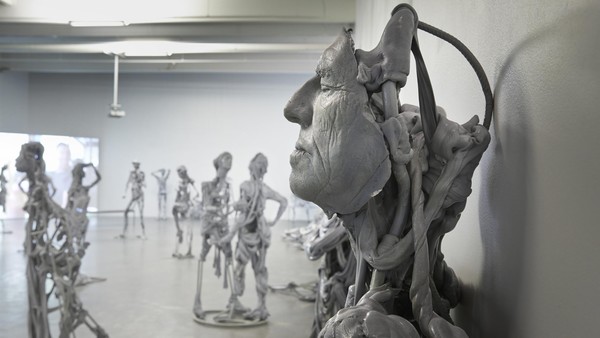

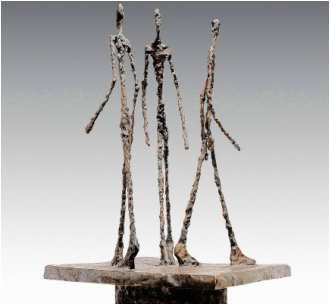
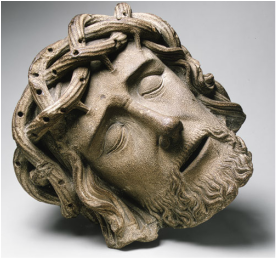
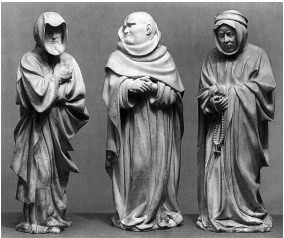
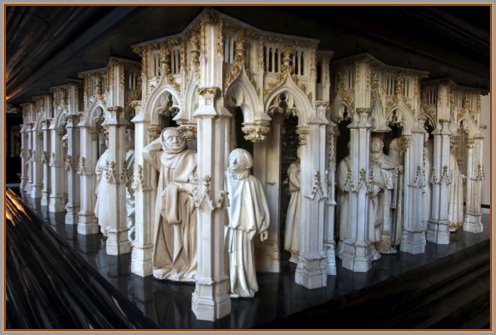
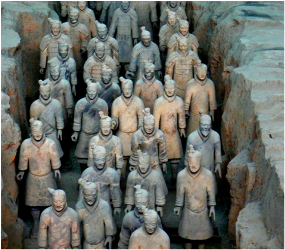
 RSS Feed
RSS Feed